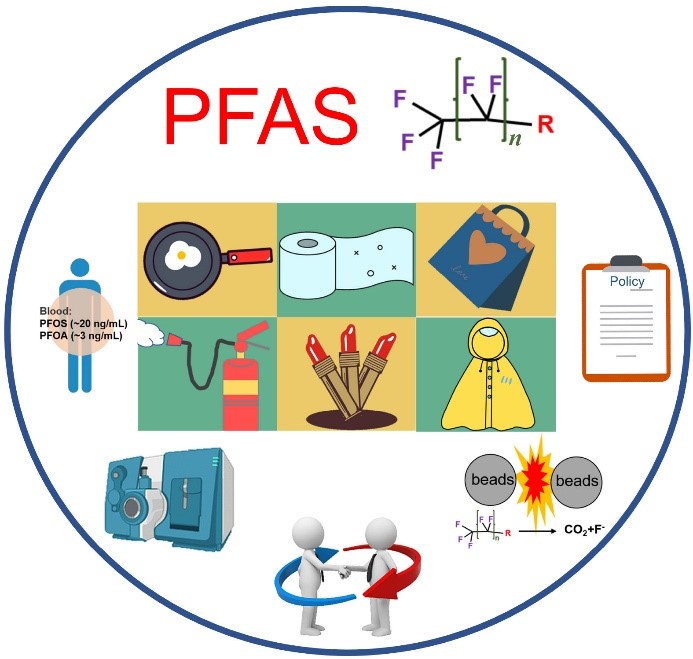
Breaking down the indestructible: new technologies target PFAS environmental menace

PFAS Ubiquity and Environmental Challenges.
USA, August 22, 2024 /EINPresswire.com/ -- PFAS, or "forever chemicals," are pervasive pollutants that pose severe risks to human health and the environment due to their extreme resistance to degradation. This study introduces four advanced technologies that offer promising solutions for PFAS remediation. By effectively breaking down these persistent chemicals and addressing their environmental impacts, the research paves the way for more sustainable practices and healthier ecosystems. Additionally, it emphasizes the need for global collaboration and robust research investment to manage PFAS contamination comprehensively.
PFAS are synthetic chemicals widely used in products such as non-stick cookware and waterproof clothing due to their water and grease-resistant properties. However, their persistence in the environment has led to widespread contamination and significant health concerns, including links to cancer and immune system disorders. Despite efforts to control PFAS, these chemicals remain a formidable challenge due to their resistance to natural degradation. Due to these challenges, there is an urgent need to conduct in-depth research into effective PFAS remediation technologies and develop strategies for global collaboration and responsibility.
Researchers from Tongji University and South China Agricultural University have published a perspective (DOI: 10.1007/s11783-024-1891-5) on July 18, 2024, in Frontiers of Environmental Science & Engineering, presenting a comprehensive approach to PFAS remediation. The study introduces four advanced technologies—hydrothermal alkali treatment (HALT), low-temperature mineralization, mechanochemical degradation, and adsorption technologies. These methods demonstrate high efficiency in breaking down PFAS compounds and highlight the importance of global collaboration and investment in addressing the widespread environmental and health risks associated with PFAS.
The study focuses on four innovative technologies for PFAS degradation: HALT, low-temperature mineralization, mechanochemical degradation, and adsorption. HALT, operating under high temperatures and pressures, rapidly degrades over 100 PFAS compounds in contaminated water and soil. Low-temperature mineralization uses common reagents like DMSO to decompose PFAS at moderate conditions, offering a cost-effective and efficient solution. Mechanochemical degradation, through high-energy ball milling, breaks down PFAS in solid materials such as soil, providing a versatile and environmentally friendly option. Additionally, adsorption technologies employ materials like activated carbon to capture and remove PFAS from water and soil. Together, these methods offer a comprehensive toolkit for tackling PFAS contamination across various environmental contexts, with an emphasis on scalability and sustainability.
"These innovative PFAS remediation technologies represent a significant advancement in our ability to address one of the most persistent environmental challenges of our time," said Professor Ian T. Cousins of Stockholm University, a leading expert in environmental science. "By integrating multiple approaches that effectively break down these ‘forever chemicals,’ this research not only sets a new standard for environmental cleanup but also offers a scalable and sustainable solution for protecting public health and the environment on a global scale."
The application of these advanced technologies could significantly enhance our ability to manage PFAS contamination, with broad implications for industrial and environmental sectors. These methods not only reduce the persistence of PFAS but also offer scalable, sustainable solutions that can be implemented globally. As these technologies continue to develop, they are likely to play a key role in setting new benchmarks for environmental remediation, contributing to cleaner ecosystems and improved public health outcomes worldwide.
DOI
10.1007/s11783-024-1891-5
Original Source URL
https://doi.org/10.1007/s11783-024-1891-5
Funding information
This work was financially supported by the National Key Research and Development Program of China (No. 2022YFC3702102), the National Natural Science Foundation of China (No. 51978488) and the Key-Area Research and Development Program of Guangdong Province (China) (No. 2020B0202080001).
Lucy Wang
BioDesign Research
email us here
Distribution channels: Environment, Science
Legal Disclaimer:
EIN Presswire provides this news content "as is" without warranty of any kind. We do not accept any responsibility or liability for the accuracy, content, images, videos, licenses, completeness, legality, or reliability of the information contained in this article. If you have any complaints or copyright issues related to this article, kindly contact the author above.
Submit your press release